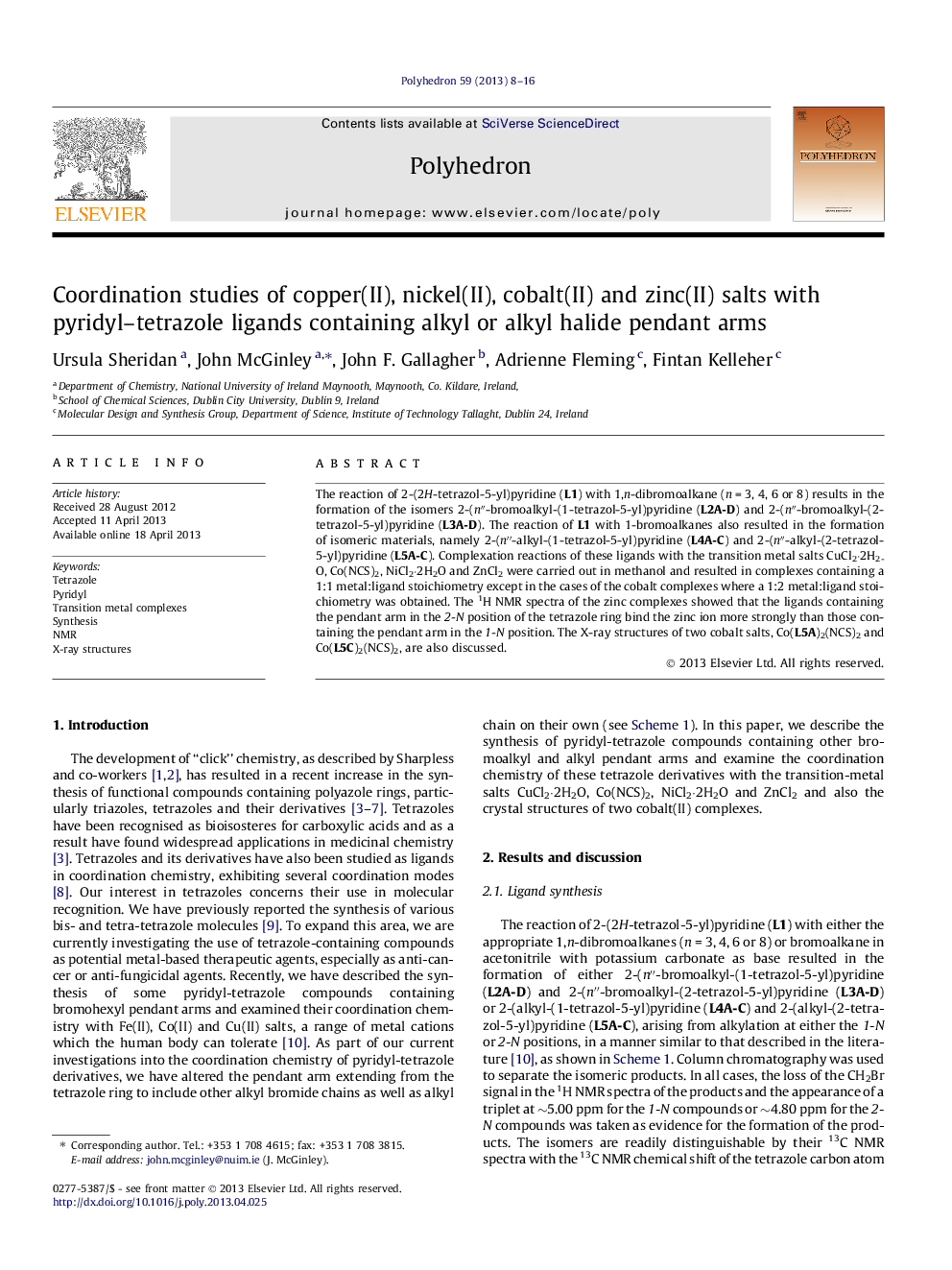| Article ID | Journal | Published Year | Pages | File Type |
|---|---|---|---|---|
| 1335733 | Polyhedron | 2013 | 9 Pages |
The reaction of 2-(2H-tetrazol-5-yl)pyridine (L1) with 1,n-dibromoalkane (n = 3, 4, 6 or 8) results in the formation of the isomers 2-(n″-bromoalkyl-(1-tetrazol-5-yl)pyridine (L2A-D) and 2-(n″-bromoalkyl-(2-tetrazol-5-yl)pyridine (L3A-D). The reaction of L1 with 1-bromoalkanes also resulted in the formation of isomeric materials, namely 2-(n″-alkyl-(1-tetrazol-5-yl)pyridine (L4A-C) and 2-(n″-alkyl-(2-tetrazol-5-yl)pyridine (L5A-C). Complexation reactions of these ligands with the transition metal salts CuCl2·2H2O, Co(NCS)2, NiCl2·2H2O and ZnCl2 were carried out in methanol and resulted in complexes containing a 1:1 metal:ligand stoichiometry except in the cases of the cobalt complexes where a 1:2 metal:ligand stoichiometry was obtained. The 1H NMR spectra of the zinc complexes showed that the ligands containing the pendant arm in the 2-N position of the tetrazole ring bind the zinc ion more strongly than those containing the pendant arm in the 1-N position. The X-ray structures of two cobalt salts, Co(L5A)2(NCS)2 and Co(L5C)2(NCS)2, are also discussed.
Graphical abstractThe MII complexes of 2-(2H-tetrazol-5-yl)pyridine derivatives, containing either an n-bromoalkyl (n = 3, 4, 6 or 8) or and n-alkyl (n = 4, 6 or 8) pendant arm at either the 1-N (L2) or 2-N (L3) position of the tetrazole ring, have been studied.Figure optionsDownload full-size imageDownload as PowerPoint slide
